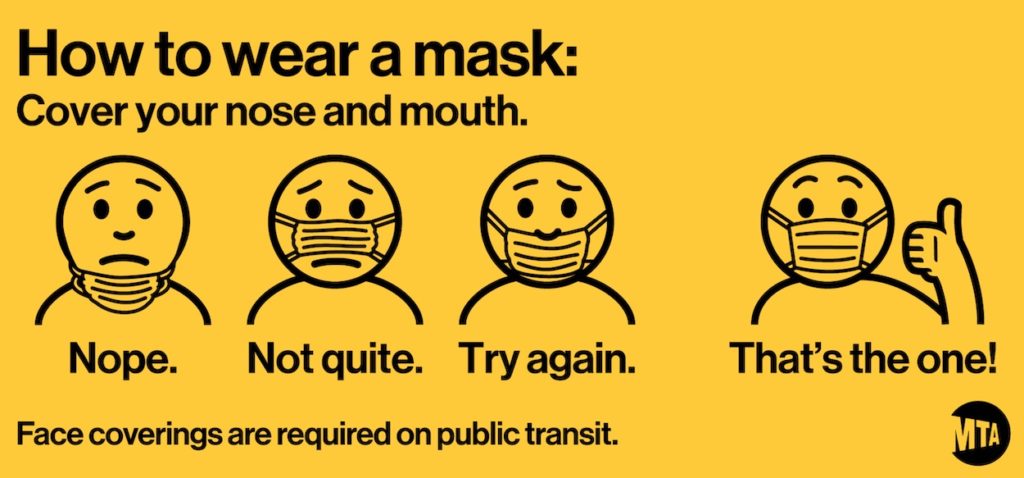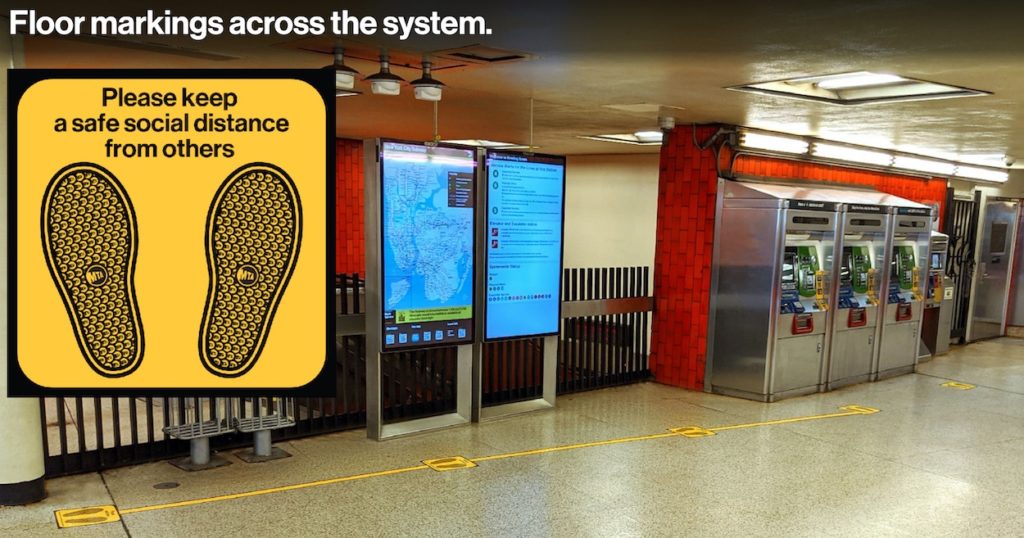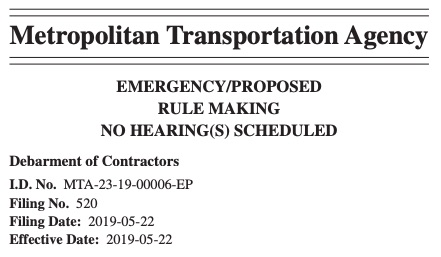
MTA officials gathered last week to announc front-door boarding and fare collection on all local and SBS buses will resume Monday, August 31. (Photo: Jessie Mislavsky / MTA NYC Transit)
My friend Marcia Herold tends bar at the Greenwich Street Tavern in Tribeca, and as with so many of New York City’s service workers, 2020 has been a tough year. Her bar was closed for much of the spring, and it has reopened only as much as any of the city’s thousands of restaurants and bars have — with outdoor service only and hours scaled back to 11 p.m. For a place that used to serve food and drinks late into the night, the Greenwich Street Tavern is just trying to survive through the pandemic.
For years, Marcia, who lives in Boerum Hill, never had to think twice about getting home. Even on nights when the bar would close late, Marcia could easily jump onto the subway and be home quickly, but these days the trip is more complicated. By the time Marcia wraps up service and she and her co-workers finish cleaning, catching that last train back to Brooklyn is no sure thing. Sometimes she’s make it; more often, she doesn’t.
A few weeks ago, she waited on the platform for a train that wasn’t going to show up, and the MTA worker keeping an eye on things never told her the train wasn’t coming. More recently, she and a co-worker split a cab back to Brooklyn after missing the last train, but her co-worker, who couldn’t right now afford the cab fare all the way back home, had to get all the way to East New York. It’s usually just a 20-minute ride on the 3 or 4 train but can take 45 minutes or longer via a bus or two.
This is the current reality for around 15,000 New Yorkers who need late-night train service to get to and from their jobs but have found passenger service shutting down as early as 12:30. And yet, as New York City struggles to return to any semblance of normalcy, there is no end in sight to the MTA’s overnight passenger shutdown. Imposed in early May under the guise of “disinfecting,” by all accounts from multiple MTA and New York State sources, the shutdown was the brainchild of Gov. Andrew Cuomo in response to multiple news stories concerning homeless New Yorkers inundating an empty subway system. Instead of attempting to address the root causes of homelessness in New York, Cuomo ordered the state agency in charge of operating the city’s subways to shut down service, foisting the problem onto the city’s streets, and promoted the idea that the subways have to shut down for cleaning.
The MTA has added a few Night Bus-like buses on some key subway routes and had been paying for a handful of taxi rides every night. But their response to decreased overnight demand has been to tell essential workers trying to get home to just take local buses. For some, that’s a three-bus, multi-hour trip. For others, the trip home is a long walk or a nightly taxi ride few can afford. Meanwhile, the trains aren’t actually stopped. They run all night, on the same sparse schedule as before, but without passengers. The MTA’s disinfecting efforts — largely sanitation theater based on what we know about transmission paths for COVID-19 — continue with or without train service, and no one at the MTA has answered the two questions I have continued to post regarding the overnight shutdown:
- Which elements of the overnight disinfecting would be impossible to accomplish if passengers were permitted on the trains that are still running?
- And how would that impact the overall risk of COVID-19 transmission on subways?
Each time I think the issue could be coming to a head, the Governor puts a stop to any speculation. State Senator Brad Hoylman has proposed legislation requiring the MTA to provide 24/7 subway service but only “after a declared end to the COVID-19 pandemic,” as he said in his statement. With no end in sight to the pandemic, that bill is largely meaningless right now. We’re in a state of emergency, and the governor can do whatever he wants.
When pressed on the issue earlier this week, the governor punted. The MTA has recently announced that due to low usage and a high cost amidst an existential budget crisis, the Essential Connector cab service would be suspended. The agency had reported only around 1500 riders per night and a cost of $49 a ride on average. The last night of for-hire vehicle rides will be August 30, and on August 31st, the MTA will reinstitute fare collection on local buses. Since the early days of the pandemic, local buses had been free to protect bus drivers, but the MTA cannot afford to give away rides right now. The agency has built barriers to protect drivers and is upgrading filtration systems on all of its buses to go along with the fares the agency says it must collect.
But what about that overnight subway service? The MTA can’t afford anything right now, but it can continue to afford running empty trains all night. When asked about these recent moves, the governor this week said of 24/7 service, “You’ll have to ask the MTA.” The MTA bounced it back to another state agency. When pressed by reporters, Pat Foye, increasingly annoyed with the question, said, “As we’ve said, while the pandemic continues, the 1 a.m. to 5 a.m. closure will continue. The state commissioner of health will determine the continuation of the pandemic. We’re not in the public health business. The commissioner of health will opine on the continuation of the pandemic.” While Foye tried to claim the overnight shutdown allows the MTA to be more productive, when asked, Foye could not name a single project outside of the L train work on an accelerated schedule thanks to the pandemic shutdown. It all just rings hollow as it impacts the lives of thousands.
This is, of course, a classic case of political hot potato. The MTA, under orders from the governor, shut down the overnight service but won’t say when it will restart, and the governor, who controls the MTA, wants nothing to do with the question. So we’re stuck. We’re stuck with buses that cost the same as the subway but cannot provide the same long-distance service and relatively fast travel times the subway can generally guarantee. We’re stuck watching workers like Marcia struggle to get home after their jobs each night, and we’re stuck in limbo with businesses trying to hang on while the state and city stack the decks against them. Few local politicians are speaking out, and few are fighting for the transportation needs of a New York City just trying to hang on for a few more weeks and months. The pandemic continues, and that’s all the cover the MTA and Andrew Cuomo need right now.










